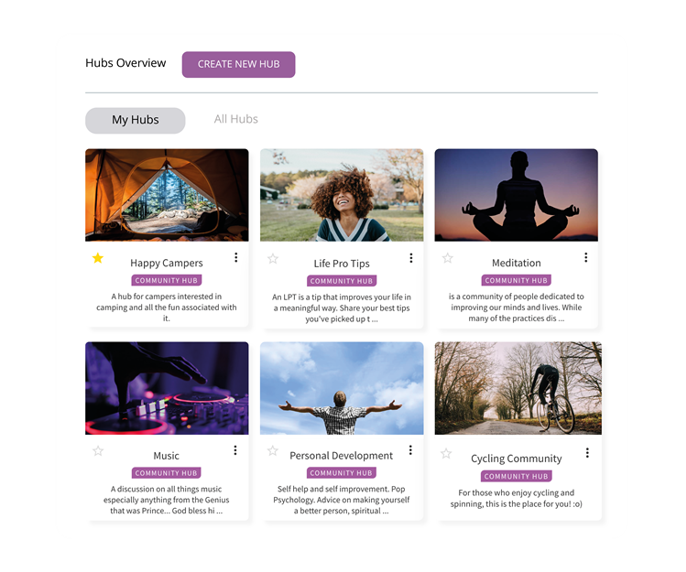Nothing is more important than your wellbeing, be it physical or mental.
We’ve always valued our physical health to some degree, but mental health has only recently started to be destigmatised and it is still difficult for people to confront, especially in the workplace.
Oak Engage’s Mental Health in the Workplace report found that 58% of workers have experienced mental or physical stress because of work in the past two years. This shows many factors behind mental wellbeing at work are not being tackled properly.
Matthew Smith, Co-Founder and Chief Operating Officer from If U Care Share, who have partnered with Oak Engage on the report, believes business knowledge of reasons for poor mental health is vital to tackling them: “When it comes to mental health we believe education is key. This is why we provide bespoke training to organisations for intervention and support.
“It’s important that these sessions are as engaging as possible to ensure the messages get across and also to help change cultures.’
In this blog, we will show you how to keep mental health in check in the physical and virtual workplace.
Work is the biggest cause of stress
We spend nearly a third of our lives at work, so it’s no wonder that it's the main cause of our stress.
A study by mental health charity, Mind, found that 7% have had suicidal thoughts as a result of workplace stress. A quite worrying statistic.. but what is behind it?
Increased remote working has seemingly caused isolation and anxiety about returning to the office, whilst the cost of living crisis is also making people stressed about their salary. How are they going to pay for their heating bill if working from home or their commute to the office?
Workers have had little respite over the last few years…
Oak Engage’s Mental Health in the Workplace Report found that nearly a third were stressed because of unclear expectations. Aside from this and the financial aspect, common factors behind workplace stress can be burnout and a lack of purpose.
Especially in remote or hybrid working, it can be difficult to look after your mental health with the isolation you may face as a result.
How to manage workplace stress
Almost everyone has experienced some of the drivers of stress in our lifetime, whether they are aware of it or not. Now let's look at some of the ways you can manage stress in the workplace..
Beware of symptoms of overworking
The secret to avoiding burnout is to be aware of the symptoms in the first place…However, that is easier said than done.
There are 7 key symptoms of overworking to look out for and ways to avoid or combat if you already suffer from them.
Poor sleep patterns- Exercise to exert built-up energy
Easily distracted - At the start of the day set out focused, definitive objectives
Weakened immune system - Keep active and have scheduled meals before, during and after work
Lack of energy- Get into a morning routine before work (gym, walk, etc.) even when wfh
Disregard the importance of rest- Designate a period of time every evening where you do not answer work calls or messages
Negative self perception - Write down three positive things you have achieved at work every day
Poor work-life balance- Make sure you take annual leave when you need to
Here are some other ways you can keep your mental health in check in the workplace, whether it be at home or the physical office…
Identify stressors
As mentioned, you’ll only be able to stop the drivers of poor mental health at their source if you know what they are. As an employee, it’s key that you understand and take appropriate action, such as speaking to your manager about it.
Employers should conduct regular feedback to understand the employee experience better. Through Pulse Surveys and built-in analytics, businesses will be aware of the issues and make changes accordingly. Pulse Surveys can be done anonymously, making employees more likely to flag issues, so they’re a great tool for businesses to identify stressors.
Matthew Smith, Co-Founder and Chief Operating Officer at If U Care Share, says:“ The ability to spot behaviours is essential to any preventative action.
“The workplace can sometimes be a reason for stress and anguish but can also be an environment where they are easier to spot. “
Matthew Smith, Co-Founder and Chief Operating Officer
Keep active
Your physical health will invariably impact your mental health. Working at home can be sedentary. Even the walk to the car, bus or train has been replaced with a commute from your bed to the home office (sometimes in the same room!)
You must make time to get out, whether that be a walk, run or trip to the gym. Doing this before work or at lunchtime will also help you establish a daily routine. If you feel healthier physically it will help you feel better in general.
Establish healthy boundaries
Oak Engage’s Mental Health in the Workplace report found that 19% of employees were stressed as a result of overworking.
In 2021, the Portuguese government passed a law that banned any communication with employees after contracted working hours.
Whilst it might be feasible for every business, there is a lot to be said about the stress and exhaustion of overworking. Making sure that you are not being pushed to your very limit is key to ensuring you can bring your best self every day. Draw a line in the sand and realise when it is time to switch off from work.
Talk to your manager
Talking to someone is the first step to tackling any mental health issue, no matter how difficult it may be. When it comes to the aforementioned triggers of workplace stress, the best person to speak to is your manager. They will have the power to make changes and have a duty of care to you.
Ensure that you have regular check-ins with your manager and as a manager ensure that you have an open door policy. A people directory, where employees can find contact details for managers and HR can help achieve this.

Learn To relax
If you’re researching work and mental health you’ll come across the term ‘work-life balance’ countless times. As we mentioned, one of the drivers of poor mental health is burnout or overworking.
You need to find time to switch off. Take sufficient time off, finish work at a reasonable hour and recharge the proverbial batteries.
As an employer, consider mitigating burnout with benefits that support a work-life balance. Four day weeks have been trialled by many businesses with some success and unlimited holidays can create a culture where recharging is encouraged and not perceived as laziness.
Recommended reading 📖:: Four day week vs unlimited holidays
Rely on your support network
No one can tackle their mental health issues purely on their own. Sometimes it's healthy to talk about your problems with your peers or support network. You may find that your issues are more common than you think.
Use your intranet as a space where you can drop one of your colleagues a message or a group chat where you can talk about things outside of work. Not only is there a place to get things off your chest, but you can also mitigate the isolation you may feel when working from home.
Take care of yourself
‘Self-care’ is another term that has worked its way into our vocabulary, but what does this mean when it comes to workplace mental health? The link between physical health and mental health is clear, although the former can be difficult to master when you’re sitting behind a desk all day.
It’s important to make time for exercise and a healthy lifestyle. Workplaces can offer subsidised fitness memberships or time to dedicate to exercise. With Oak Engage, you can create communities for people who are interested in sports, want to participate together or just for encouragement. Whether they work in the same office or not, health and wellbeing can be a collective effort.

If you or anyone you know is struggling or would like to educate your organisation on mental health issues and suicide prevention, get in touch with our charity partner If U Care Share.
Follow our social pages to keep up to date with all things internal comms and employee engagement.



